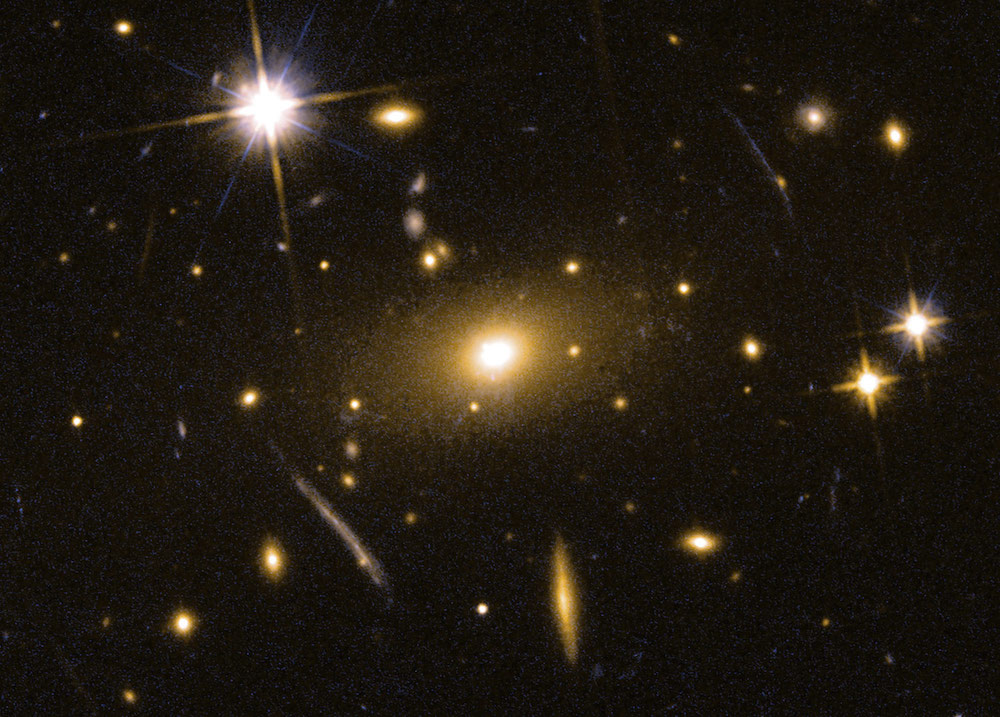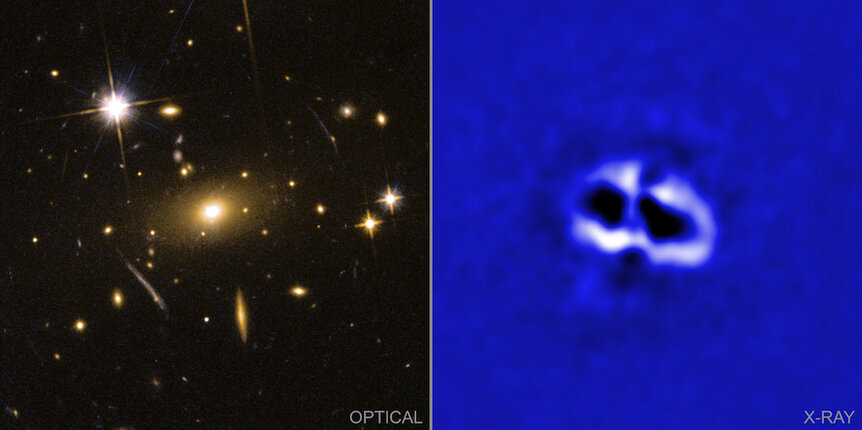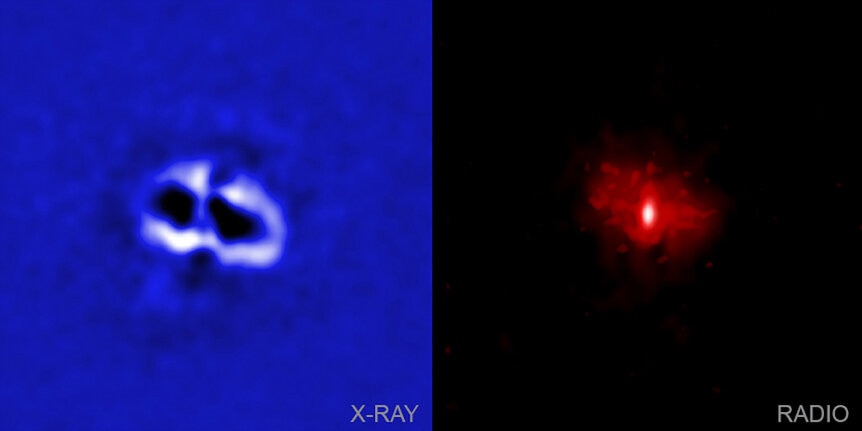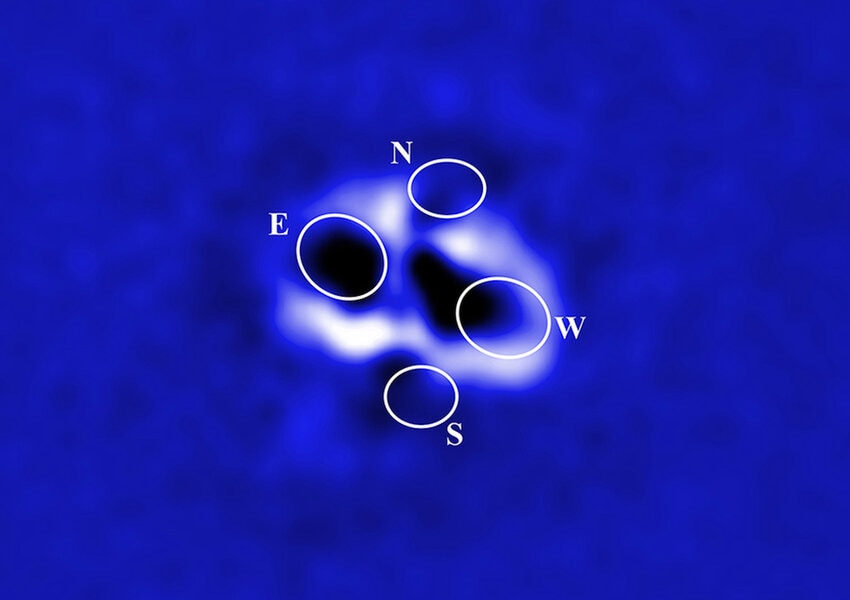Create a free profile to get unlimited access to exclusive videos, sweepstakes, and more!
Two monster black holes roar, carve out enormous cavities around them
Huge holes in a galaxy blown out by huge black holes.

I recently wrote about the possibility that two huge black holes collided and merged in the center of the Andromeda Galaxy, sowing chaos. As you might expect, though, they need not collide to be trouble. They're supermassive black holes. Trouble is everywhere they are.
What might surprise you, though, is just how they can create discord. And this one I love: They're monsters. They roar.
4 billion light years from Earth lies a cluster of galaxies called RBS 797, a collection of hundreds of galaxies all orbiting their mutual center of mass. At that center is a galaxy in it is bigger and brighter than the others, the benefactor, no doubt, of material falling to the gravitational center of cluster… and that includes galaxies themselves, which travel inward, collide, and merge with the growing galaxy that sits at the cluster's heart.
We know that at the centers of all big galaxies are big black holes, with millions or billions of times the mass of the Sun. This is even more true for galaxies in the centers of clusters; again, because it's smack dab at the center of mass of the cluster all things fall there, including other galaxies and their own black holes. The black hole that reigns there can reign supreme.
This galaxy was already known to be active, that is, the black hole actively feeding on material. This stuff falls into a flattened accretion disk swirling around the monster, and friction makes it grow incredibly hot. Sometimes, too, the magnetic fields locked into the disk create a vortex in the center, so strong they can gather and focus unimaginable forces, blasting material out and away from the central black howl in opposite directions, twin tornadoes or cannon firing away into space.
These jets, as they're called, are so powerful they can carve immense cavities in the interstellar material in the galaxy surrounding the black hole. This was seen in the big galaxy dominating RBS 797, two huge holes in the gas forced open by the jets. They were first detected in X-rays by the Chandra X-ray Observatory; the gas at the cavity walls is pounded hard by the jets, heated to millions of degrees such that it glows in high-energy light.
But then radio observations using the Very Large Array — where the jets shine brightest — showed something peculiar: There were obvious signs of the jets blowing into the two cavities, but also radio emission pointing in a direction nearly 90° from the other two. Suspecting these might also be radio jets, much deeper Chandra observations were made, and sure enough another pair of cavities was found, located along the axis of the second radio jets, perpendicular to the first pair.
What could this mean?
There are two possibilities. The first, and more likely, is that there are two supermassive black holes in the galactic center. Some radio observations do show two compact sources of energy separated by about 250 light years; this could be from the two black holes. If so, one is likely the original from the central galaxy, and the other from a galaxy recently eaten. It's falling in toward the bigger black hole, and may eventually merge in a billion years or two.
In the meantime, though, some event or events triggered a massive influx of gas onto both these black holes. This piled up into disks, triggered each to send out jets — two each, so four in total — and these carved out the cavities. Various methods used to measure the age of the cavities converge on 10–50 million years, with no more than 10 million years difference between the two sets. So it's possible they formed at the same time, or one set formed up to 10 million years after the other.
When galaxies collide huge amounts of gas and dust are tossed around, so there's plenty of material there that could've fed these monsters, causing them to erupt around the same time. So that all fits.
However, there is a second possibility: There's only one black hole, it blasted out jets, then for some reasons something reoriented it, tipping it over, and then it subsequently erupted again. It's possible a collision with another galaxy and the merger with its black hole could reorient the bigger beast, causing the jets to fire out at a different angle. Usually such reorientations take a long time though, 20 million years or so, and thus the astronomers who worked all this out put more weight on the double-black-hole scenario.
I'll note that these cavities are staggeringly huge, a couple of hundred thousand light years across — that's bigger than our entire Milky Way galaxy with plenty of room to spare. It takes soul-chilling amounts of energy to push aside perhaps millions of times the mass of the Sun in gas and dust on scales like this.
But then these black hole beasts have vast amounts of energy at their command. Just by the power of their vicious gravity, they can not only draw in huge amounts of material but create circumstances where far, far more can be torn away.
When these monsters roar, the entire galaxy must listen.

















